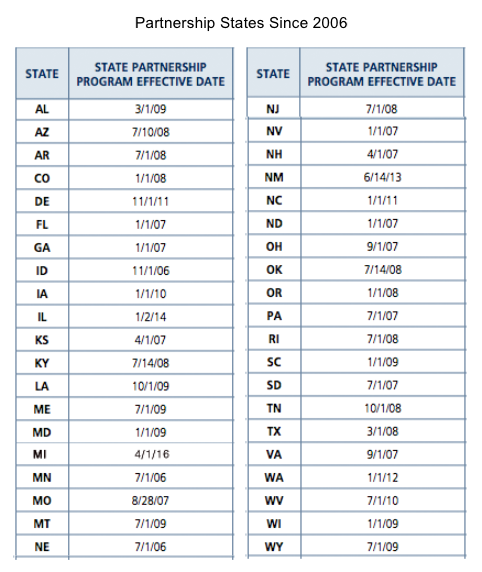Partnership Asset Protection
|
||
| Asset protection from Medicaid. The goal of The Partnership for Long Term Care is to protect citizens from being forced to spend everything they have worked for on long term care, to prevent or delay dependence on Medicaid, and to protect their assets from Medicaid estate recovery. Only traditional long term care insurance qualifies for Partnership asset protection. Group long term care insurance, bought via employer, retirement and alumni associations generally do not qualify for Partnership. Life insurance and annuities with long term care benefits also do not qualify for Partnership, neither do older policies sold before a state adopted Partnership. For States that elect to have Partnership, the State plan must provide that, in determining eligibility for Medicaid, an amount equal to the benefits paid under a qualified LTC policy is disregarded. The State must also allow, in the determination of the amount to be recovered from a beneficiary's estate, for the same amount to be disregarded. If you already bought a policy how do you know if it is Partnership or not? To find out if your existing policy is Partnership contact your insurance company directly. You will need: policyholder name, policy number or social security number. Currently I do not have Partnership policies for these states: Alaska, California, Connecticut, DC, Hawaii, Indiana, Mississippi, New York, Utah, Vermont.
Partnership for Long Term Care Policies A Partnership policy cost the same as a non-Partnership yet provides additional benefits such as "asset protection" assuring that catastrophic long term care expenses won't reduce you to poverty even if you run out of insurance benefits. A part of Medicaid is called Medicaid Estate Recovery. This is where the state office can examine your records to see if you have transferred any assets to avoid spending them for your care. In most states there is a 60 month "look back" period, which means if you transfer your assets today the state can "look back" 60 months to see if any have been transfered. The lifetime asset protection provided by a Partnership policy basically says that for every dollar of insurance money that is spent for your care, you get to keep an equal amount and still qualify for Medicaid (Medi-Cal, etc). Rather than having to spend down your assets to the poverty level of $2,000-$3,000 you get to keep as much money as your policy paid out. EXAMPLE: If your policy spent $200,000 for your care and you used all of the insurance but still needed care you could keep $200,000 of your money. Wouldn't your quality of life be better with $200,000 in cash than with only $2,000? A Partnership policy also provides for an estate recovery exemption, meaning Medicaid will no longer require your estate to repay Medicaid for your care costs. The requirements the consumer has to meet for their policy to qualify for Partnership* Under 61 years old: The insurer is required to offer you the option to purchase and retain compound inflation protection. The risk that our health may change is real and it is not something we can plan for, but planning for long term care is something we can do. |
